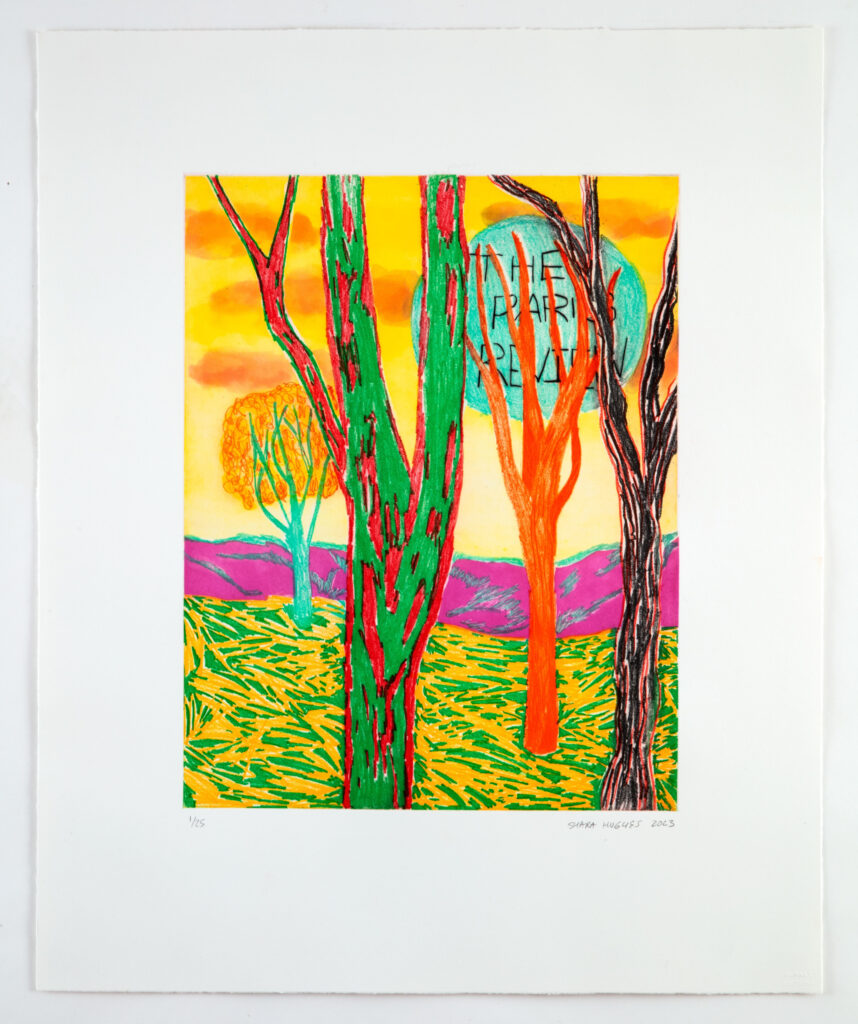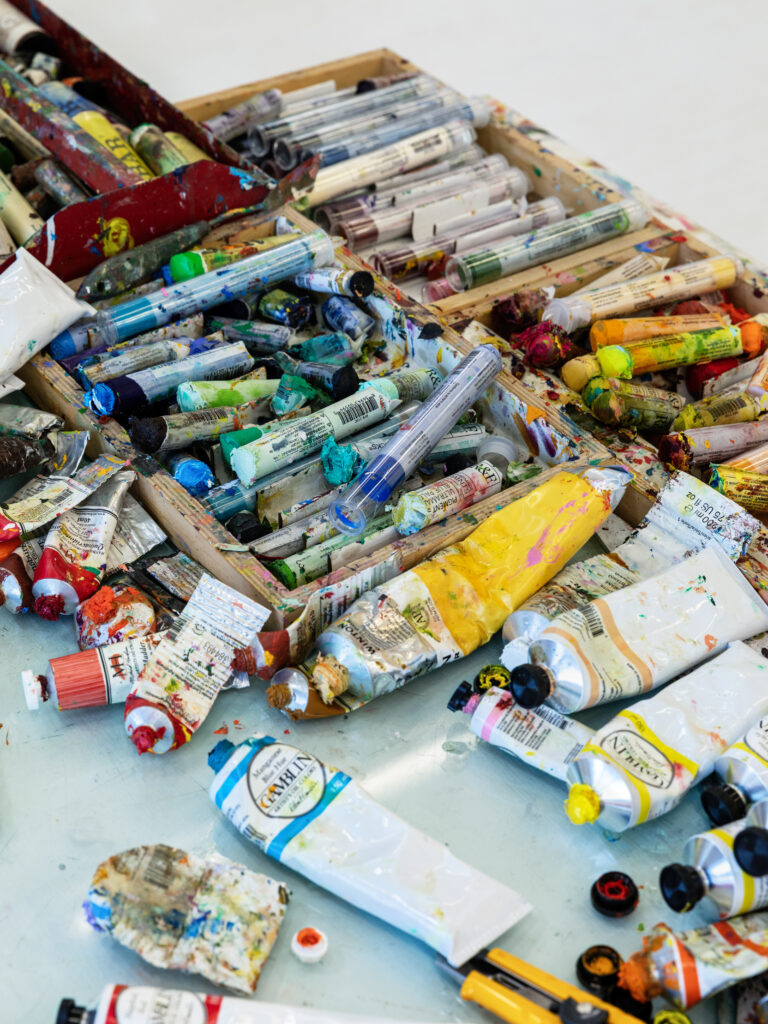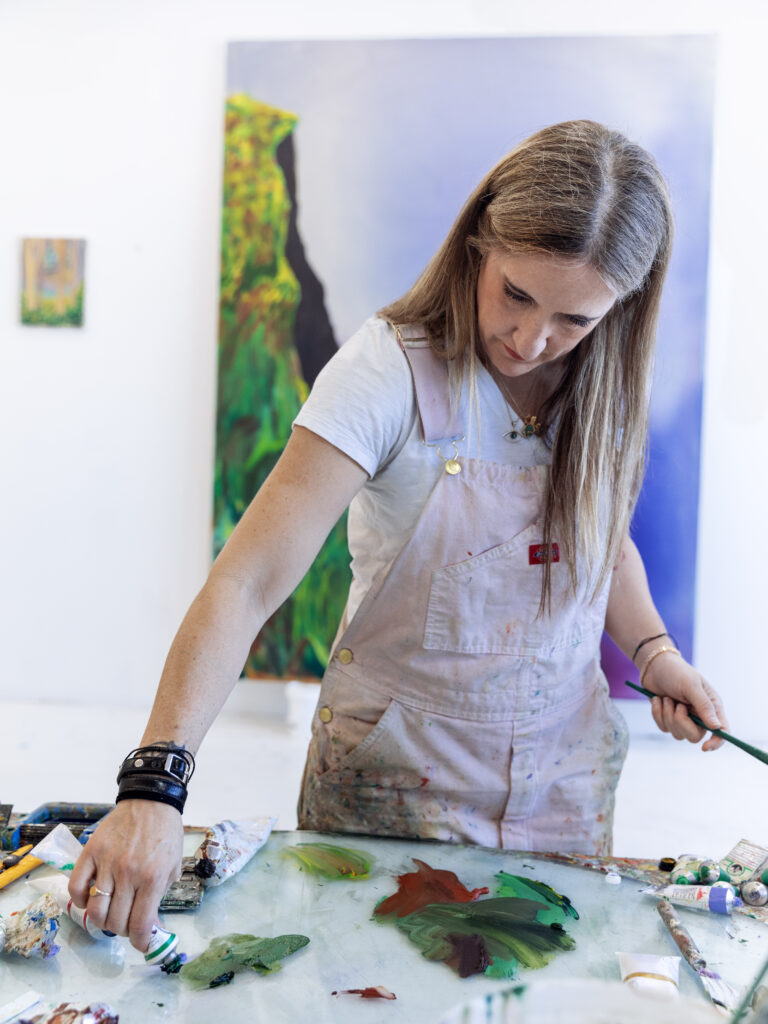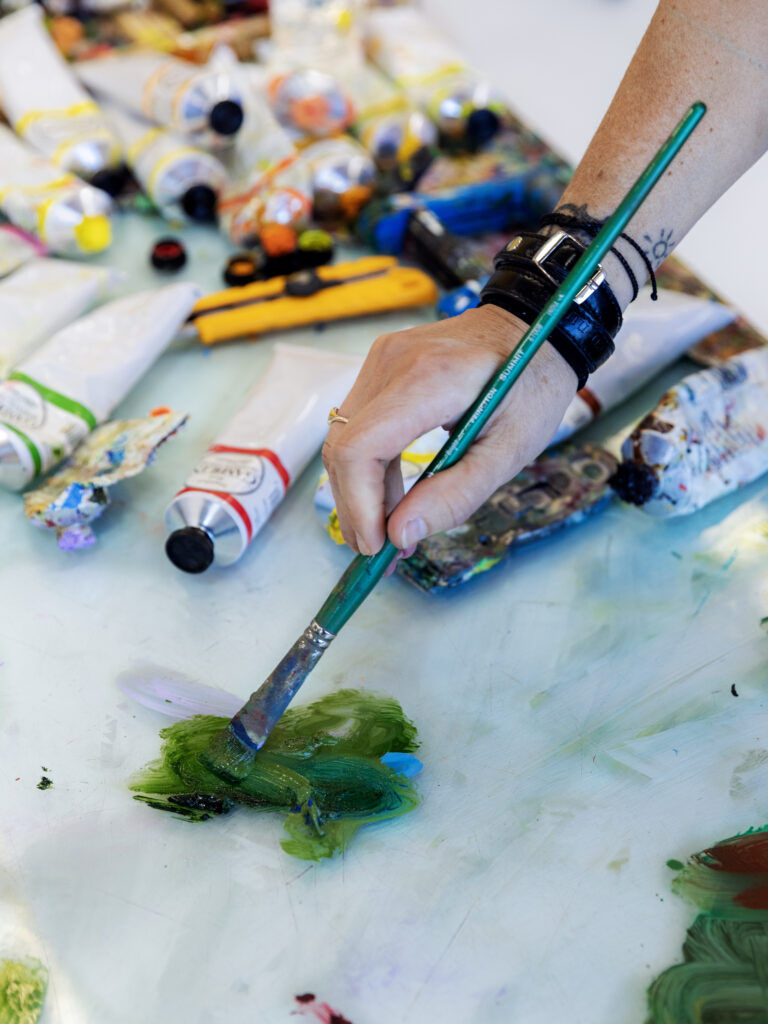The Paris Review Print Series: Shara Hughes

Shara Hughes, The Paris Review, 2023, etching with aquatint, spit bit, soft ground, and drypoint on Hannemühle Copperplate bright white paper, plate size 18 x 14″, paper size 27 x 22″. Made in collaboration with Burnet Editions. Photograph courtesy of Jean Vong, © Shara Hughes and Burnet Editions.
Earlier this year, The Paris Review released a new print made by Shara Hughes. Hughes, who was born in Atlanta in 1981 and works in Brooklyn, New York, describes her lush, chromatic images of hills, rivers, trees, and shorelines, often framed by abstract patterning, as invented landscapes. The one she invented for the Review is striking in its rich color and vibrant dreaminess. We spoke to Hughes about her work this summer, touching on poisonous flowers, her unusual color palette, and landscape paintings.

Photograph by Elliot Jerome Brown, Jr. Courtesy of Shara Hughes and Pilar Corrias, London.
INTERVIEWER
Why do you find yourself drawn to botanical imagery and landscape?
HUGHES
Landscapes are accessible to most humans. Nature is something that is familiar but uncontrollable. I like the flexibility that painting landscapes provides—how quickly the mood can change. It feels really exciting and fluid. And the paintings can mimic people in a nonillustrative way. Like, a flower can stand on its own as a figure, or it can become a part of the whole scene. And I don’t have to be responsible for who exactly the figure is and what they look like. I don’t have to make a narrative about what the figure is doing in the landscape. Instead, I can ask the viewer to enter the landscape. Sometimes, they are the only figure there. This keeps the range of feeling and story vast.

Photo by Elliot Jerome Brown, Jr. Courtesy the artist and Pilar Corrias, London.
INTERVIEWER
Do you have favorite flowers to paint?
HUGHES
I don’t have a favorite flower to paint. And I’m not sure I care too much about what type of flower it turns out to look like. I do like symbolism and the meaning behind certain flowers but by the time I’ve finished the painting, it is not important to me if I’ve succeeded at rendering how that flower looks in real life. I’m more focused on the feel or the role of the flower within the painting. I wanted to paint poisonous flowers, so I researched what they look like. They look completely beautiful and no different than nontoxic flowers. If I want a flower to look toxic, it has to somehow feel that way when looking at the painting.

Photograph by Elliot Jerome Brown, Jr. Courtesy of Shara Hughes and Pilar Corrias, London.
INTERVIEWER
How do you choose the colors you’re going to use in a specific painting?
HUGHES
I don’t choose a specific palette before I start painting. It’s all intuitive and not predetermined. That keeps mystery and surprise in the process.
The Paris Review launched its print series in 1964 with original works by over twenty major contemporary artists. The series was underwritten by Drue Heinz, a literary philanthropist and former publisher of the magazine, and was directed by the American painter Jane Wilson, who also contributed a print. The series has since grown to include more than five dozen original works by acclaimed artists such as Andy Warhol, Keith Haring, Helen Frankenthaler, Willem de Kooning, Marisol Escobar, and Sol LeWitt. MoMA purchased a full set for their permanent collection in 1967, and the series has been exhibited internationally. The print series was revived in 2022 with four prints by Rashid Johnson, Dana Schutz, Julie Mehretu, and Ed Ruscha. Hughes’s print is available for purchase, as are a number of the vintage prints.
Copyright
© The Paris Review
